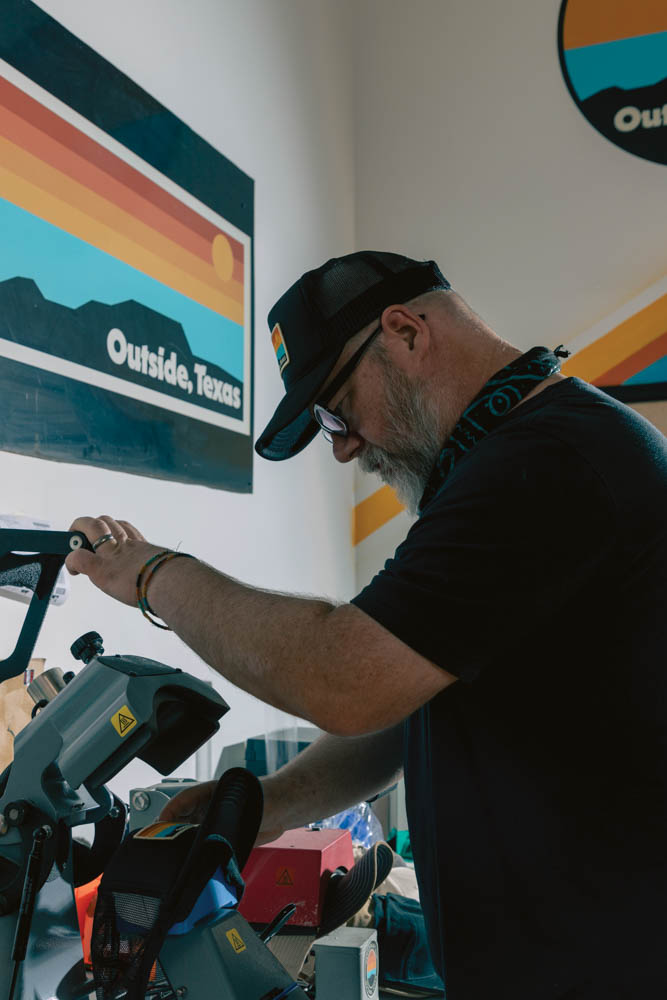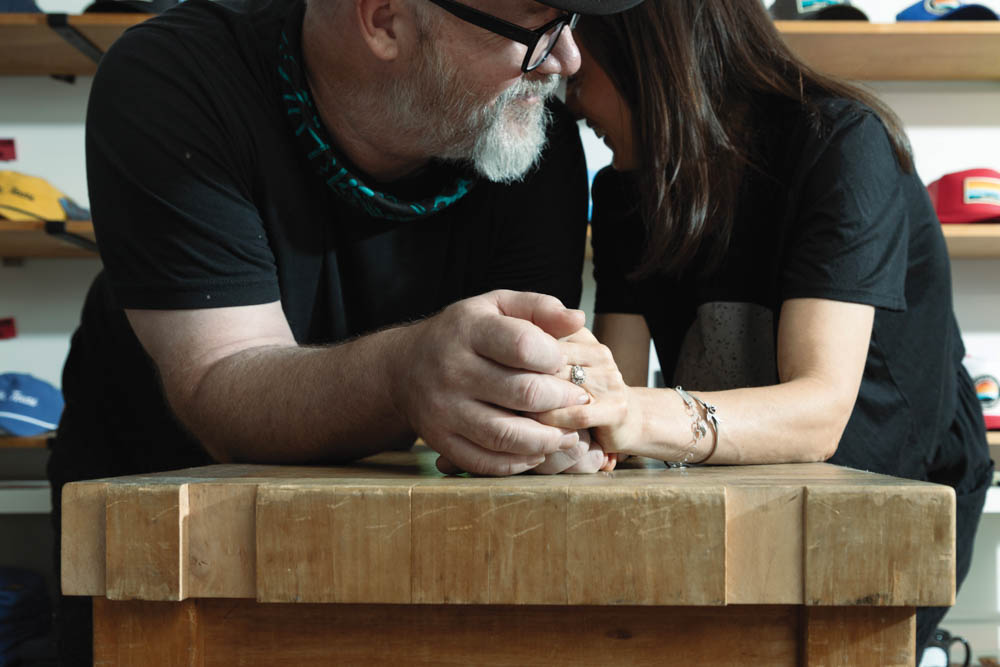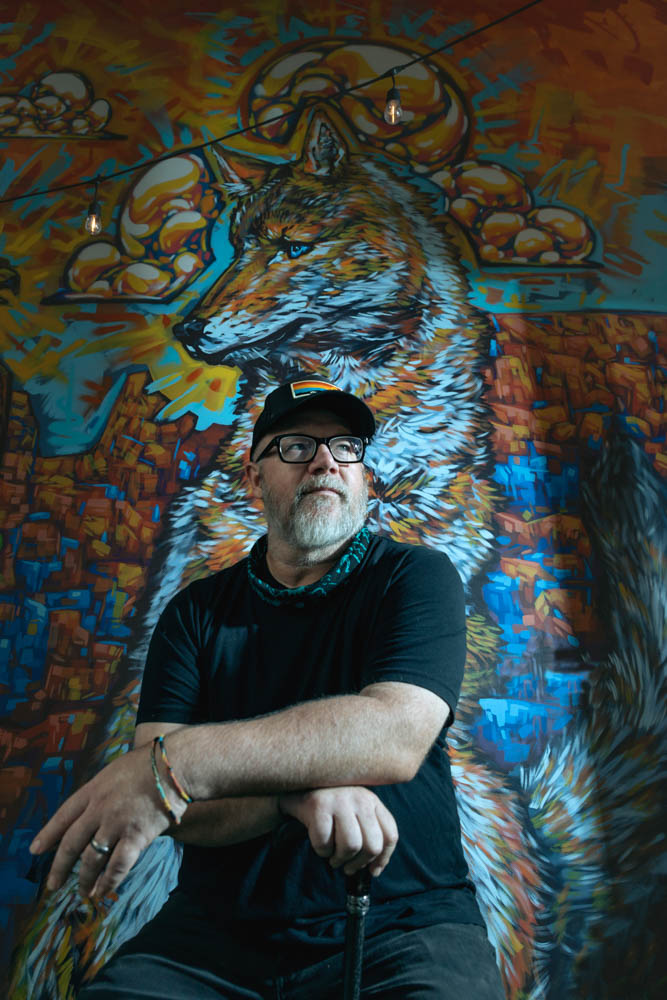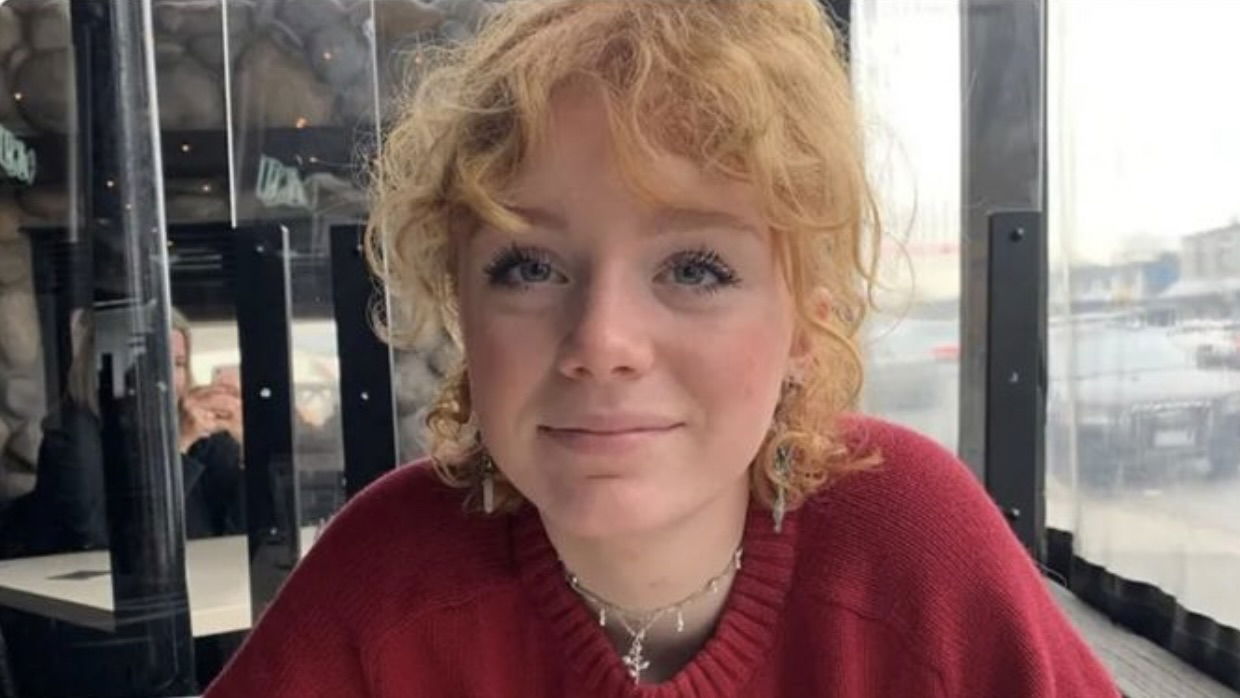
Photo by Victoria Gomez
Fever. Stomach problems. Loss of appetite. Pain in limbs. A series of symptoms plagued Brandon Yates when he traveled to his parents’ ranch in Sherman, Texas in November 2022.
They thought it might be COVID. Or maybe the flu?
Eventually the symptoms became unbearable and his wife, Michele Yates, urged Brandon to go to the hospital because his fever rose to 104 degrees.
After a flood of tests, there was no answer.
“He’s the guy who never gets sick,” says Michele.
It was December 1st when Brandon came to the hospital.
When he finally “came to,” it was February.
He lay in an artificial coma for months and fluctuated between life and death.
His organs were failing and the chemotherapy threatened to kill him.
During this time, Brandon struggled to make use of the fleeting moments of consciousness that remained to him.
Three years earlier, Brandon and his business partner Josh Florence founded Outside, Texas, a clothing and merchandise store designed to inspire people to get outside.
The couple opened the business with no prior clothing experience and began selling their clothes at the Dallas Farmers Market. Over time, Brandon and Florence started a social media account for the business. People tagged the account with pictures of themselves in Outside, Texas clothing all over the world.
Brandon was in charge of operations, which meant that every password, security question and email was in his possession. When he got sick, Florence had to figure out figure out how to move forward without letting the company and its loyal customers down.
When he couldn’t be in the store, he would call for his laptop whenever he was awake.
“He was in a semi-lucid state and asked about things that were happening in the store,” Michele says.
Florence remembers communicating with Brandon via FaceTime in early January during one of his brief periods of consciousness.
“He had his sister Nay Nay and Michelle put together a whiteboard showing how we wanted to distribute the holiday bonuses to our employees,” laughs Florence. “And he was absolutely adamant about making sure I understood exactly how he wanted it, because it was so important to him.”
By this point, Outside, Texas had become a family affair. Everyone was involved and keeping everything running smoothly—Michele and her family, Brandon’s parents and siblings. They supported Brandon in his quest to seize his conscious moments by FaceTime-calling him from the store while he directed them to make changes, gave him updates, and communicated with the rest of the staff.
Brandon can’t remember most of these moments.
When Brandon finally regained consciousness, he found that his muscles had atrophied, the beard he had proudly worn since he was 19 had disappeared due to chemotherapy, his body was riddled with tubes and IVs, and he had lost about 100 pounds.
“I couldn’t walk, I couldn’t talk,” says Brandon. “I looked in the mirror and just lost it.”
Accompanying this new appearance was a nagging pain in his hip, which turned out to be a septic infection in the hip joint, which his doctors surgically removed.
Due to his limited mobility, Brandon couldn’t go outside. The very thing he wanted to share with others through his brand was something he couldn’t quite afford himself.
He began to see parts of the outside world through the skylights of the hospital corridor. The staff took their time, pushing him slowly down the hall when he was being taken for another test or procedure, letting him enjoy the rays of sunshine.
“He just closed his eyes and took it all in,” says Michele’s sister Renee McCalmont. “You could see that it meant so much to him.”
Doctors were finally able to diagnose his illness: hemophagocytic lymphohistiocytosis (HLH). This rare disease is considered life-threatening and is characterized by impaired immune activity that causes inflammation and multi-organ failure.
But the diagnosis did not give him much peace of mind. He was given three weeks to live.
“All these doctors came in and you could see they were doing their best, they just didn’t know what to do,” Brandon says.
And then finally came the breakthrough – an experimental drug called Jakafi. His medical team wasn’t sure whether or not to give it to him. It was new and potentially too strong for Brandon’s fading body.
It was a gamble. One that required courage, strength and determination. The same things he had when he took a leap of faith and started a business in an industry he had no experience in, but this time the stakes were much higher.
He decided he had to take it.

Photo by Victoria Gomez
After about a week, his internal bleeding stopped and the attack on his internal organs also stopped.
When it was determined that his condition was stable, it was time to learn how to function again.
Everything he did without thinking became difficult. Talking, eating, drinking, it wasn’t easy.
But it had become a family affair again. Brandon never spent a night alone in the hospital. Everyone took turns being there, even if they weren’t conscious enough to know they were there.
They did all sorts of things with him and even watched swallowing videos.
In April he was transferred to inpatient rehab. But his body had other plans. After a few weeks, the sepsis in his hip returned and required another operation.
Returning to rehab after the sepsis was removed was a big challenge.
“He is a very determined person,” Says Michele. She knew he would make it.
And he did it. He was discharged from physical therapy after being able to walk two steps on a staircase.
Brandon returned home on April 26, 2023.
Over the course of six months, Brandon endured numerous hip surgeries, dialysis, chemotherapy, organ failure, and physical rehabilitation.
“It’s incredible to see how far he’s come,” says Michele. “It’s really incredible.”
Still, Brandon kept thinking about the store. How was it doing? How could he make it better?
Outside, Texas sits in Lower Greenville, its circular logo on the horizon poking out to greet guests just before they enter the store. Just to the right is a floor-to-ceiling mural depicting a hawk and coyote in a canyon that displays the colors of a Texas sunset. Just to the left is a steep staircase.
As Brandon entered the store, now in a wheelchair, he watched them. They would be his next target. The next hurdle to overcome. One day he would walk up those stairs. Alone.
By May, Brandon was slowly returning to normality by going to the farmer’s market, working at the store, and climbing stairs, all while nursing the remnants of sepsis in his hip.
He moved around with a hidden drainage bag on his hip, which he emptied and cleaned daily.
“I’m hiding it because I’m going to keep working,” Brandon says.
While complications of sepsis continue to exist and cause bouts of pain, Brandon’s HLH has completely “disappeared.”
“I just keep my head down and stick with it,” says Brandon.




